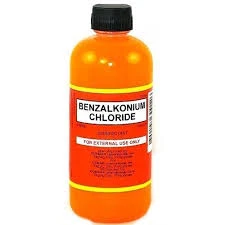Differences Between Flocculants and Coagulants in Water Treatment Processes
Flocculant vs. Coagulant Understanding Their Distinctions and Applications in Water Treatment
Water treatment is a critical process in ensuring the availability of clean and safe drinking water as well as maintaining the health of aquatic ecosystems. Among the many chemicals used in this process, flocculants and coagulants play essential roles in the removal of suspended solids and impurities from water. Despite often being used interchangeably, these two terms represent distinct substances and processes. Understanding their differences, functions, and applications is vital for efficient water treatment.
Coagulants The First Step in Water Treatment
Coagulants are chemical agents that facilitate the aggregation of suspended particles in water. They neutralize the charge on these particles, allowing them to clump together into larger aggregates known as flocs. Commonly used coagulants include aluminum sulfate (alum), ferric chloride, and polyaluminum chloride. The effectiveness of a coagulant largely depends on factors such as pH, temperature, and the nature of the contaminants.
The coagulation process typically occurs in several stages. Initially, the coagulant is added to the water, often followed by rapid mixing to ensure even distribution. This is crucial, as coagulants need to interact sufficiently with the particles in suspension. Once the charges are neutralized, slower mixing or quiescent conditions are applied, allowing the newly formed flocs to collide and grow in size. The final stage involves sedimentation, where the larger flocs settle to the bottom of the tank due to gravity, effectively removing impurities from the water column.
Flocculants Enhancing the Settling Process
Once coagulation has occurred, flocculation is the next step in the treatment process. Flocculants are substances that promote the agglomeration of these smaller flocs into larger, more easily removable masses. They work by bridging the smaller flocs together, enhancing the efficiency of the settling process. Common flocculants include natural polymers (like starch or guar gum) and synthetic polymers (like polyacrylamide).
In contrast to coagulants, flocculants typically require different application methods, involving gentle mixing to prevent breaking apart the flocs formed during coagulation. The use of flocculants can significantly improve the overall effectiveness of water treatment, leading to clearer water and reduced turbidity.
flocculant vs coagulant

Key Differences Coagulants and Flocculants
While coagulants and flocculants are used together in water treatment, they serve distinct purposes. The primary role of a coagulant is to destabilize the particles in suspension and initiate the formation of flocs, while the flocculant enhances the size and settling rate of these flocs.
Another notable difference is the speed of their action. Coagulation is generally a quicker process, occurring within minutes of chemical addition, while flocculation takes longer as it involves the gradual formation of larger aggregates.
Moreover, coagulants often work best in a specific range of pH and require monitoring to optimize conditions, whereas flocculants may be more versatile in varying water quality scenarios.
Applications in Water Treatment
The use of coagulants and flocculants is widespread across various water treatment applications, including drinking water purification, wastewater treatment, and industrial processes. Coagulants are typically employed in municipal water treatment plants to remove contaminants and improve water quality for potable use. Flocculants, on the other hand, are often utilized in situations requiring enhanced clarification, such as in paper manufacturing, mining, and chemical production.
Conclusion
In summary, although both flocculants and coagulants are vital to the water treatment process, they have distinct roles and mechanisms of action. Understanding their differences and applications allows water treatment professionals to employ them effectively, ensuring the delivery of clean, safe water. As global water scarcity issues persist, the importance of these chemicals in maintaining water quality cannot be overstated, making ongoing research and innovation in this field a necessity for future sustainability.
-
Pbtc Scale InhibitorPBTC: A Scale Protector for Industrial Water TreatmentNewsAug.05,2025
-
Organic Phosphonate: An Efficient Defender in the Field of Scale InhibitionNewsAug.05,2025
-
Hydrolyzed Polymaleic Anhydride: Green Pioneer in Scale Inhibition FieldNewsAug.05,2025
-
PAPEMP Polyamino Polyether Methylene Phosphonic Acid For SaleNewsAug.05,2025
-
Flocculant Water Treatment: A Pioneer in Purification in the Field of Water TreatmentNewsAug.05,2025
-
Benzyl Isothiazolinone: An Efficient and Broad-Spectrum Antibacterial Protective GuardNewsAug.05,2025





